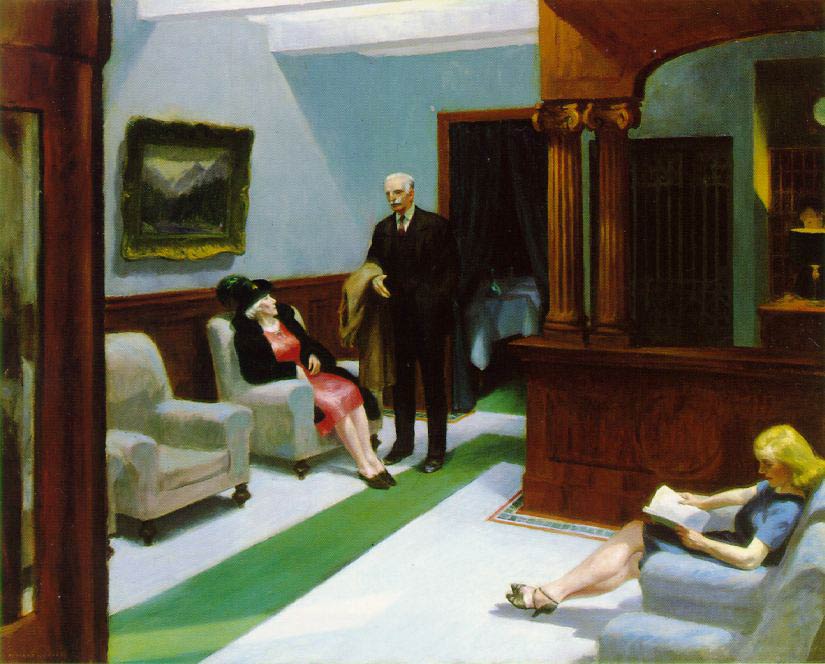| Hotel Lobby | |
|---|---|
 |
|
| Artist | Edward Hopper |
| Year | 1943 |
| Medium | Oil on canvas |
| Location | Indianapolis Museum of Art, Indianapolis, USA |
| Dimensions | 32 1⁄4 in × 40 3⁄4 in |
| 81.9 cm × 103.5 cm | |
| Edward Hopper Famous Paintings | |
| Nighthawks, 1942 | |
| Automat, 1927 | |
| Early Sunday Morning, 1930 | |
| Room in New York, 1932 | |
| Hotel Lobby, 1943 | |
| Chop Suey, 1929 | |
| Office at Night, 1940 | |
| Office in a Small City, 1953 | |
| Girl at Sewing Machine, 1921 | |
| Complete Works |
Hotel Lobby is an oil painting done on a canvas, which was created by the American realist painter. It shows two women in the main lobby. The woman on the right is in a blue dress, seated with her legs crossed; the woman on the left is an older woman, in a red coat, and a hat. In front of the older woman is a gentleman that is standing, holding an overcoat in his arm. A framed landscape painting is on the left hand side above the woman, and there is a clerk that is found behind the check in desk as well.
The Meaning
Hotel Lobby is a signature piece which uses his classic style of brevity and of alienation. Staying and traveling to many hotels, this is one of the two pieces he created with the theme, and chose to display estranged couples in his work. Many believed that the work is a depiction of what Hopper and his wife went through in their marriage, as the alienated couples are meant to be a reflection of him and his wife. Many describe the travelers in the painting as being suspended in time, which gives a dramatic feeling to the painting, as well as a stoic feeling to the work.
Design
The painting is using a harsh tone in lighting, and rigid lines, which are used to create an uncomfortable environment. Broadway theater is also a love of Hopper’s which is something that the painting also depicts to its viewers.
Regardless of the way you view the work, what you take from it, or what stylistic approach you choose to see in the work that is depicted, the Hotel Lobby is one of the most famous pieces created by the painter, and depicts his main focus and style of work.